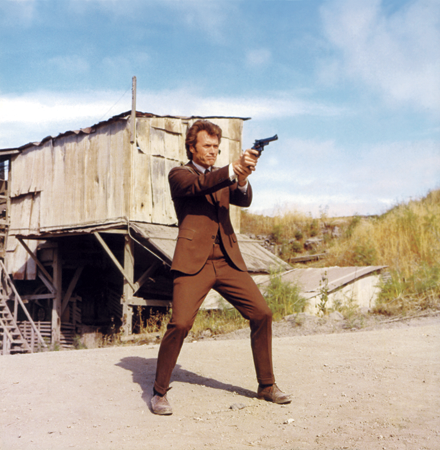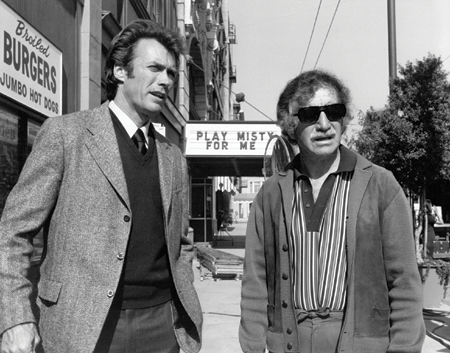
1971
Dirty Harry
DIR. DON SIEGEL

© WARNER BROS., COURTESY PHOTOFEST
Clint Eastwood as rule-breaking detective Harry Callahan takes aim in Dirty Harry.
Of all the cinematic catchphrases that have become part of the American lexicon, none is more indelible than “Go ahead, make my day,” the vigilante cop Harry Callahan’s feral challenge to the bad guys in the Dirty Harry quintet. The first—and finest—film in the series follows San Francisco homicide detective Callahan (Clint Eastwood), armed with his famed .44 Magnum, as he stalks the Scorpio killer. (The film’s fey psychopath was loosely modeled on the real-life Zodiac killer, who terrorized California’s Bay Area in the late ’60s and early ’70s.)
Released in the wake of political assassinations and increasing outrage at the Vietnam War, Dirty Harry captured the national zeitgeist and came as a salutary shock to the system, fueling controversy surrounding such issues as police brutality and victims’ rights. “It would be hard to argue [that] the film (like Harry) is not racist, homophobic, and devoid of a genuine respect for what most of us consider constitutional liberties,” according to Charles Silver, curator of the Museum of Modern Art’s department of film. Indeed, outside the 44th Academy Awards, protestors carried placards reading “Dirty Harry Is a Rotten Pig.”
Critics were divided, too, with the New Yorker’s Pauline Kael calling it “a deeply immoral movie.” But Dirty Harry eventually came to be seen as a great American film. In 2012, it became part of the prestigious National Film Registry. And Harry—the archetypal antihero of the ’70s—became a career-defining role for Eastwood, who until then had been mostly known as the Man with No Name in Sergio Leone’s spaghetti Westerns.
Though Eastwood was not the first choice for the role, which had been offered to the aging likes of John Wayne and Frank Sinatra, he is now inseparable from the image of the anarchic avenger. Once, when speaking to a film class, Eastwood launched into Harry’s signature “Do you feel lucky?” speech “like it was yesterday,” he said. “Everybody loved it. I’ve never said anything to an audience that’s pleased them more. Everybody was going, ‘Yeah! Yeah!’ I could have taken that audience to war.”

© UNIVERSAL PICTURES, COURTESY PHOTOFEST
Eastwood with director Don Siegel in front of a marquee advertising Play Misty for Me, the Eastwood-helmed film that was released during Dirty Harry’s filming. Siegel had made his mark in a number of seminal early noirs, including Riot in Cell Block 11 (1954) and The Killers (1964).

© WARNER BROS., COURTESY PHOTOFEST
Harry on the prowl.

© WARNER BROS., COURTESY PHOTOFEST
Eastwood with his son Kyle.

BILL EPPRIDGE/LIFE/THE PICTURE COLLECTION
The cheerful star is shown after filming a brutal beating scene.